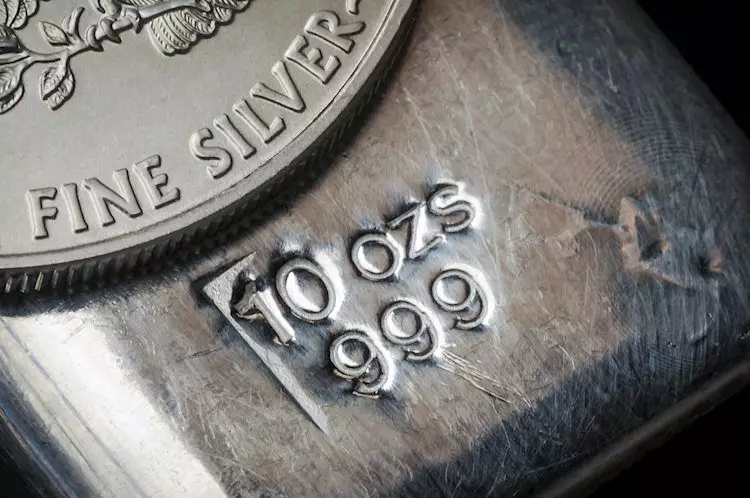On Monday, the price of silver (XAG/USD) experienced a slight decline, according to the latest data from FXStreet. Trading at $28.13 per troy ounce, the price dropped by 0.14% compared to the previous value of $28.17 on Friday. Despite this decrease, silver prices have still seen a significant overall increase of 10.44% since the beginning of the year.
The Gold/Silver ratio, a key indicator for investors, stood at 83.32 on Monday, down from 83.80 on Friday. This ratio represents the number of troy ounces of silver needed to equal the value of one troy ounce of gold. Investors often use this ratio to assess the relative valuation of gold and silver in the market. A high ratio may suggest that silver is undervalued or that gold is overvalued, leading some investors to consider buying silver or selling gold. Conversely, a low ratio may indicate that gold is undervalued compared to silver.
Silver, a precious metal highly favored by investors, has historically been utilized as a store of value and a form of currency. While gold remains more popular, many traders turn to silver to diversify their investment portfolios, leverage its intrinsic value, or hedge against inflation. Investors can choose to purchase physical silver in the form of coins or bars or trade it through Exchange Traded Funds that track its price on international markets.
The price of silver can fluctuate based on various factors such as geopolitical instability, economic recessions, interest rates, and the behavior of the US Dollar (USD) as silver is priced in dollars (XAG/USD). Geopolitical unrest or economic downturns may drive up silver prices due to its safe-haven status, albeit to a lesser extent than gold. Silver typically thrives in environments with lower interest rates as it is considered a non-yielding asset. Additionally, changes in the value of the US Dollar can impact silver prices – a strong dollar tends to suppress prices, while a weaker dollar can lead to price increases.
Silver holds significant importance in various industries, particularly electronics and solar energy, due to its superior electrical conductivity compared to metals like copper and gold. Fluctuations in industrial demand can directly influence silver prices – an increase in demand usually drives prices higher, while a decrease can lead to price drops. Factors like investment demand, mining supply (silver is more abundant than gold), and recycling rates also play a role in determining silver prices.
The dynamics of major economies like the US, China, and India can have a substantial impact on silver prices. The industrial sectors of the US and China heavily rely on silver for various processes, leading to potential price shifts. In India, consumer demand for silver jewelry plays a pivotal role in shaping prices. Notably, silver prices often follow the movements of gold prices, given their similar status as safe-haven assets. The Gold/Silver ratio remains a valuable tool for investors to evaluate the relative valuation of both metals and make informed investment decisions.
The silver market is influenced by a multitude of factors ranging from economic fundamentals and industrial demand to geopolitical events and currency fluctuations. Investors keen on venturing into the silver market should closely monitor these variables and leverage tools like the Gold/Silver ratio to make informed investment decisions.


Leave a Reply